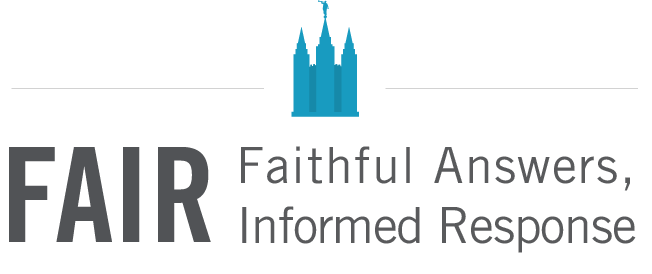
FAIR is a non-profit organization dedicated to providing well-documented answers to criticisms of the doctrine, practice, and history of The Church of Jesus Christ of Latter-day Saints.
GregSmithBot (talk | contribs) m (GLSBot: Adding headers to all articles) |
GregSmithBot (talk | contribs) m (GLSBot: Adding footers to all articles) |
||
| Line 13: | Line 13: | ||
*Additionally, these paradigms are extensible, mapping the known in satisfying detail, but "sufficiently open-ended to leave all sorts of problems for the redefined group of practitioners to resolve." (Kuhn 10) | *Additionally, these paradigms are extensible, mapping the known in satisfying detail, but "sufficiently open-ended to leave all sorts of problems for the redefined group of practitioners to resolve." (Kuhn 10) | ||
*Paradigms provide the background of expectation against which anomaly appears. (Kuhn, 65) | *Paradigms provide the background of expectation against which anomaly appears. (Kuhn, 65) | ||
{{Articles Footer 1}} {{Articles Footer 2}} {{Articles Footer 3}} {{Articles Footer 4}} {{Articles Footer 5}} {{Articles Footer 6}} {{Articles Footer 7}} {{Articles Footer 8}} {{Articles Footer 9}} {{Articles Footer 10}} | |||
[[fr:Biblical Keys for Discerning True and False Prophets/Considering Joseph Smith/Paradigm debate/Within a Paradigm]] | [[fr:Biblical Keys for Discerning True and False Prophets/Considering Joseph Smith/Paradigm debate/Within a Paradigm]] | ||
Contents |

FAIR is a non-profit organization dedicated to providing well-documented answers to criticisms of the doctrine, practice, and history of The Church of Jesus Christ of Latter-day Saints.
We are a volunteer organization. We invite you to give back.
Donate Now